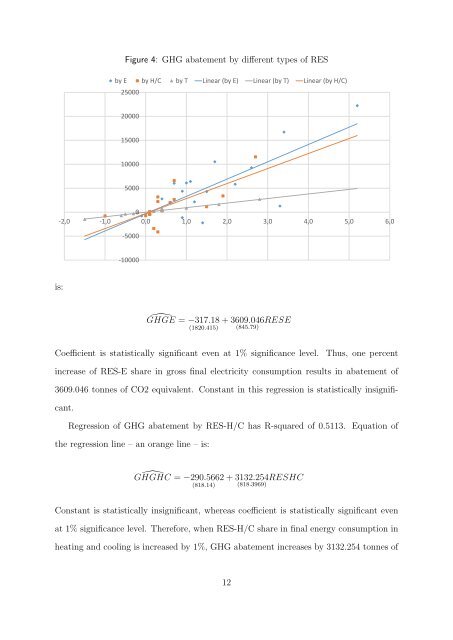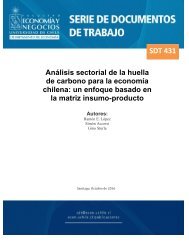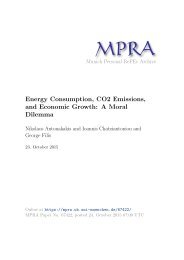MPRA
n?u=RePEc:pra:mprapa:75444&r=env
n?u=RePEc:pra:mprapa:75444&r=env
You also want an ePaper? Increase the reach of your titles
YUMPU automatically turns print PDFs into web optimized ePapers that Google loves.
Figure 4: GHG abatement by different types of RES<br />
by E by H/C by T Linear (by E) Linear (by T) Linear (by H/C)<br />
25000<br />
20000<br />
15000<br />
10000<br />
5000<br />
0<br />
-2,0 -1,0 0,0 1,0 2,0 3,0 4,0 5,0 6,0<br />
-5000<br />
-10000<br />
is:<br />
̂ GHGE = −317.18<br />
(1820.415)<br />
+ 3609.046RESE<br />
(845.79)<br />
Coefficient is statistically significant even at 1% significance level.<br />
Thus, one percent<br />
increase of RES-E share in gross final electricity consumption results in abatement of<br />
3609.046 tonnes of CO2 equivalent. Constant in this regression is statistically insignificant.<br />
Regression of GHG abatement by RES-H/C has R-squared of 0.5113. Equation of<br />
the regression line – an orange line – is:<br />
GHGHC ̂ = −290.5662 + 3132.254 RESHC<br />
(818.14) (818.3969)<br />
Constant is statistically insignificant, whereas coefficient is statistically significant even<br />
at 1% significance level. Therefore, when RES-H/C share in final energy consumption in<br />
heating and cooling is increased by 1%, GHG abatement increases by 3132.254 tonnes of<br />
12








